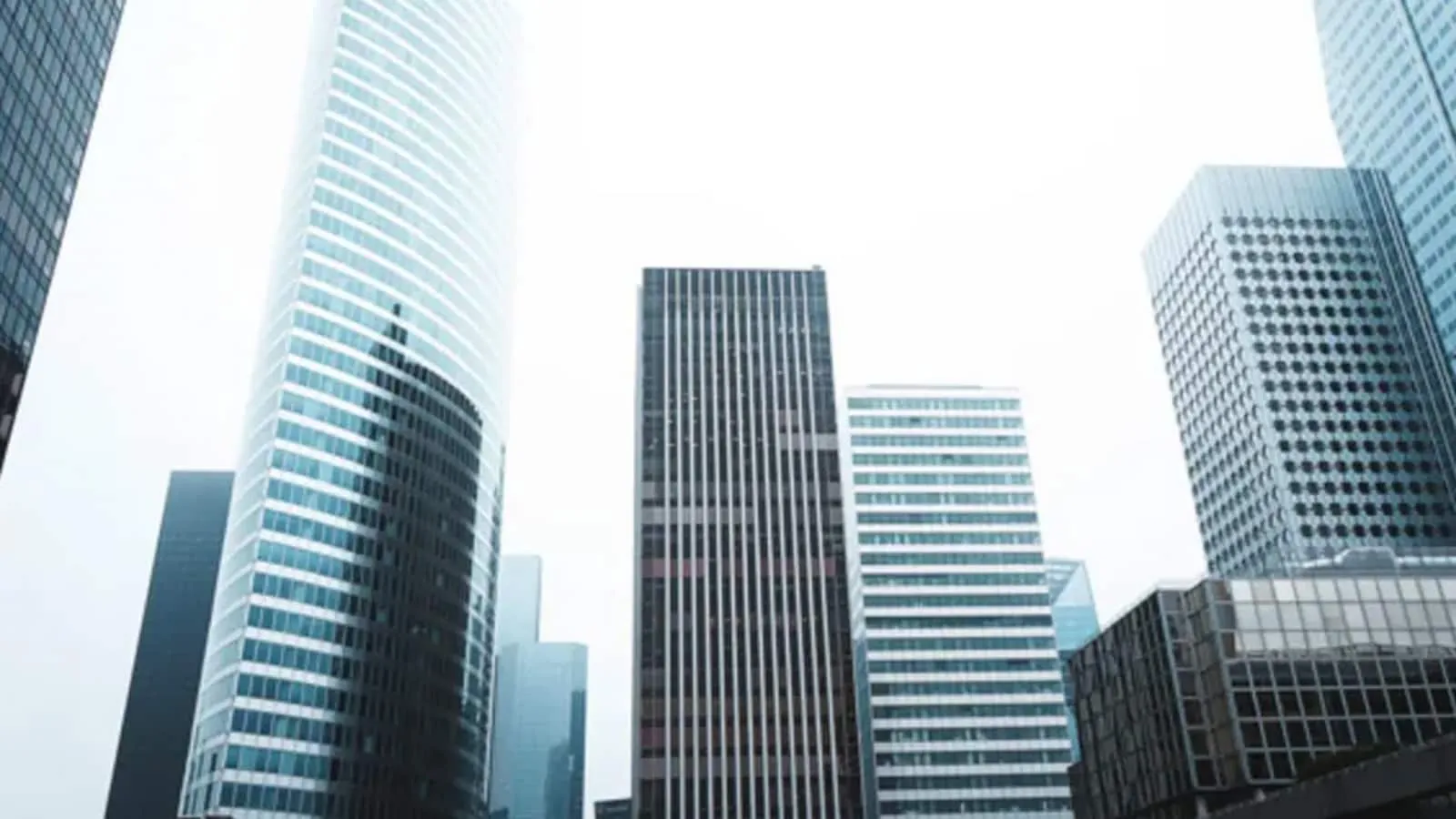Beyond the tariff truce: Where can investors find lasting protection?

In India, the Nifty 50 plunged over 5% in four days post tariff announcement, while the India Volatility Index (VIX) shot up 65.7% to 22.8 on 7 April —its sharpest single-day spike since 2007. Though US President Donald Trump partially rolled back tariffs on 9 April, offering a 90-day pause for most nations (excluding China) , anxiety lingers.
While markets initially rejoiced at this move, fueling a rebound in the blue-chip index Nifty 50, uncertainties linger. US recession anxieties cast a long shadow, and the eventual expiry of tariff reprieve poses a looming threat to exposed businesses. In this precarious landscape, where can investors find genuine safety?
Also read Market holiday hangover? Unravelling the mystery of truncated trading weeks
Market experts shared their insights with Mint to identify sectors and stocks expected to weather potential trade-induced slowdowns or a full-blown recession, offering a refuge for investors.
Threat & opportunity
Aamar Deo Singh, senior vice president–research at Angel One identified four sectors—electronics, jewellery, textiles, and pharma—as the most exposed. “Pharma sector—currently tariffs have not been announced, but there is bound to be a significant announcement by Donald Trump, so that could have an impact on our pharma companies—to a negative extent. So, that is something we’ll have to see—how the pharma companies actually manage this, because that will hit their cost competitiveness and will increase their prices. Whether US demand holds up is a crucial question—studies suggest that tariffs could add $3,800 to $4,000 to annual household expenses,” he said.
Yet, he pointed out India’s relative advantage. “The tariffs imposed on India are far lower than those on countries like China, Vietnam, Bangladesh, Sri Lanka, and Cambodia. While India faces about 27% tariffs, others are looking at much higher rates.”
On sectoral winners, Singh said, “Electronics exports could benefit. Textiles is another key sector, valued at about $2.5-3 billion, which holds potential for significant growth. If we play our cards right, we could capture a larger share of US-bound exports.”
Singh highlighted Arvind and Tata Chemicals as key stocks well-positioned to navigate market volatility. Arvind has surged 20% over a year, benefiting from its export-oriented strategy and vertically integrated operations. Meanwhile, Tata Chemicals, despite a 23% correction in a year, remains his favorite due to its global footprint and diversified business model, making it resilient in these uncertain markets.
Also read Boom to brakes: Bulk and block deals fizzle out amid market volatility
History speaks
Akshay Chinchalkar, head of research at Axis Securities, emphasized on lessons from past market downturns. “During the 2008 global financial crisis, the Nifty dropped 60% over 10 months, and all sectoral indices fell. Yet, the least damage was seen in defensive pockets: Pharma, fast-moving consumer goods (FMCG) and information technology.”
Chinchalkar noted that the tariff situation marks “a new template” for global markets. “Stagflation risks are rising by the day. Volatility itself has become more volatile, and large, outsized moves are being witnessed across every asset class and nearly on a daily basis.”
He recommended focusing on companies with “high earnings visibility, market leadership, and sectoral dominance.” His firm remains overweight on large private sector banks, telecom, consumption, hospitals, and interest-rate proxies.
“We are cautious on tech due to global headwinds and concentration risk in mega-cap names. If the tariffs-led upheaval pushes the US economy into recession, the domestic tech sector will be impacted due to reduced discretionary spending,” he added.
His top recommendations include banking heavyweights ICICI Bank and HDFC Bank, telecom leader Bharti Airtel, FMCG player Varun Beverages, healthcare stocks Max Healthcare and Lupin, along with capex-oriented plays APL Apollo Tubes and Kalpataru Projects, following recent price corrections.
The banking sector shows strong fundamentals, with ICICI Bank delivering 27% returns over the past year and maintaining a healthy 17% return on equity (RoE). HDFC Bank, despite experiencing slower deposit growth after its merger, continues to demonstrate structural strength with 24% annual returns.
Bharti Airtel has surged 50% over the year, driven by tariff hikes that have boosted revenue and strengthened the bottom line, with expectations of increased dividends by 2026. The consumer sector presents an interesting case with Varun Beverages – despite a 15% year-to-date correction. Analysts remain bullish given its favorable positioning for seasonal demand and robust distribution network.
Also read Decoding today’s market crash in charts: The hard truths you need to know alongside signs of resilience
Local shield
According to Vikas Jain, head of research at Reliance Securities, sectors linked to domestic consumption and autos are better insulated.
“Export-driven sectors like IT and pharma will be among the worst hit due to tariffs, as there is still no clarity on the extent of these duties,” he said. “In terms of data points, sectors related to exports remain vulnerable—for instance, the IT sector has already declined post tariff announcement.”
On the other hand, he added, “The consumer sector stands to benefit as domestic demand may improve. With two rate cuts of 25 basis points each, the sector—which was previously on a declining trend—has started to show some positive momentum since then.”
Within autos, Jain expects Bajaj Auto and Hero MotoCorp to see momentum, while Tata Motors may face pressure due to export exposure. He also sees upside in Voltas, Havells, and Blue Star, driven by margin improvements and volume growth.
Safety trio
Sunny Agrawal, head of fundamental research at SBI Securities, sees potential in sectors least exposed to global trade.
“Consumption staples, power utilities, and large financials offer relative safety in downturns, especially in a tariff recession,” he said. His top ideas include Emami, Indian Hotels, ITC Hotels, NTPC, Power Grid, REC, and PFC.
Agrawal also likes large lenders such as Bank of Baroda, and housing finance players like Bajaj Housing Finance, PNB Housing, and Bajaj Finance. Among autos, he highlighted M&M, Escorts, and Uno Minda as beneficiaries of rural resilience and infrastructure spending. In cement, Ultratech, Ambuja, and JK Lakshmi were cited as long-term structural bets.
Demand driven
Amit Jain, co-founder at Ashika Global Family Office Services, also advised investors to focus on companies with limited global exposure. “FMCG, domestic-focused banks, healthcare (with minimal exports), and insurance sectors offer relative insulation from tariffs and global slowdown risks, backed by steady cash flows and resilient demand,” he said.
He named HUL, ITC, Kotak Mahindra Bank, and Dr. Reddy’s as preferred plays. “Many of these have historically shown strong resilience during downturns. Their robust balance sheets and focus on domestic demand help them weather global shocks better than most.”
Vishnu Kant Upadhyay, AVP–research & advisory at Master Capital Services, echoed the defensive tilt. “While no sector is immune to economic shocks, FMCG, healthcare, utilities, and diversified businesses have shown lower downside risk during market turmoil.”
“FMCG companies producing essentials see steady demand. Healthcare needs remain inelastic. Utilities, too, offer predictable earnings due to regulated pricing and necessity-driven consumption,” he added.









